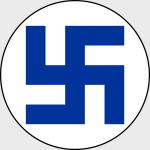Oxford AC056 Finnish Air Force Gloster Gladiator Mk. II Fighter with Skis - Gideon Karlsson, F19, Winter War, March 1940 (1:72 Scale)
"Never in the field of human conflict was so much owed by so many to so few."
- British Prime Minister Winston Churchill, commenting on the British airmen in the Battle of Britain
 One of the only biplane fighters to have any measurable success in the Second World War, the Gloster Gladiator was the product of a bygone era combining with modernity for one last fling. The Gladiator was obsolete by September 1939, but it still had what it took to make a significant impact on history. Air Ministry specification F.7/30 realized (correctly) that future fighters were going to be faster and better armed.
One of the only biplane fighters to have any measurable success in the Second World War, the Gloster Gladiator was the product of a bygone era combining with modernity for one last fling. The Gladiator was obsolete by September 1939, but it still had what it took to make a significant impact on history. Air Ministry specification F.7/30 realized (correctly) that future fighters were going to be faster and better armed.
Unfortunately, the delay in placing an order lasted 4 and a half years, by which time war was approaching, and it was realized that biplanes were soon to be judged obsolete. Folland created the S.S.37, which was the best design, and was accepted. It was really obsolete by the time of its first flight. However, since nothing else had arrived to replace the aging Bulldog fighter, the Gloster was readily accepted, and was the main fighter of the RAF until the Hawker Hurricane was delivered. By 1939, four squadrons were still operational with Gladiators.
Gladiators formed the core of the British Expeditionary Force's Advanced Striking Force in France in 1939. Many served in Belgium and the Netherlands, and many were present for the collapse of France. After 1940, most that still remained with the RAF worked as Meteorological Reconnaisance Aircraft.
Pictured here is a 1:72 scale replica of a Finnish Air Force Gloster Gladiator Mk. II fighter equipped with skis that was piloted by Gideon Karlsson during the Winter War which occurred in March 1940.
Sold Out!
Dimensions:
Wingspan: 5-1/4-inches
Length: 4-1/2-inches
Release Date: December 2015
Historical Account: "The Winter War" - The Winter War (Finnish: Talvisota, Swedish: Vinterkriget, Russian: Zimnyaya voyna) was a military conflict between the Soviet Union and Finland in 1939-1940. It began with the Soviet invasion of Finland on November 30th, 1939, (three months after the outbreak of World War II), and ended with the Moscow Peace Treaty on March 13th, 1940. The League of Nations deemed the attack illegal and expelled the Soviet Union from the League on December 14th, 1939.
The Soviet Union ostensibly sought to claim parts of Finnish territory, demanding - amongst other concessions - that Finland cede substantial border territories in exchange for land elsewhere, claiming security reasons, primarily the protection of Leningrad, which was only 32 km (20 mi) from the Finnish border. Finland refused and the USSR invaded the country. Many sources conclude that the Soviet Union had intended to conquer all of Finland, and use the establishment of the puppet Finnish Communist government and the Molotov-Ribbentrop Pact's secret protocols as proof of this, while other sources argue against this idea of a full Soviet conquest.
The Soviets possessed more than three times as many soldiers as the Finns, thirty times as many aircraft, and a hundred times as many tanks. The Red Army, however, had been crippled by Soviet leader Joseph Stalin's Great Purge of 1937. With more than 30,000 of its officers executed or imprisoned, including most of those of the highest ranks, the Red Army in 1939 had many inexperienced senior and mid-level officers. Because of these factors, and high morale in the Finnish forces, Finland repelled Soviet attacks for several months, much longer than the Soviets expected.
However, after reorganization and adoption of different tactics, the renewed Soviet offensive overcame Finnish defenses at the borders. Finland then agreed to cede more territory than originally demanded by the Soviet Union in 1939; the Soviets, having conquered the areas they demanded from Finland but at a cost of heavier losses in troops than anticipated, accepted this offer.





 Gloster Gladiator Mk. II Fighter
Gloster Gladiator Mk. II Fighter 





![Special Edition No. 3: Star Trek Federation Dreadnought Class Starship - USS Vengeance Starship [With Collector Magazine]](http://cdn4.volusion.store/qh9e9-jdqv9/v/vspfiles/photos/EMSTSP03-1.jpg?v-cache=1740197136)



